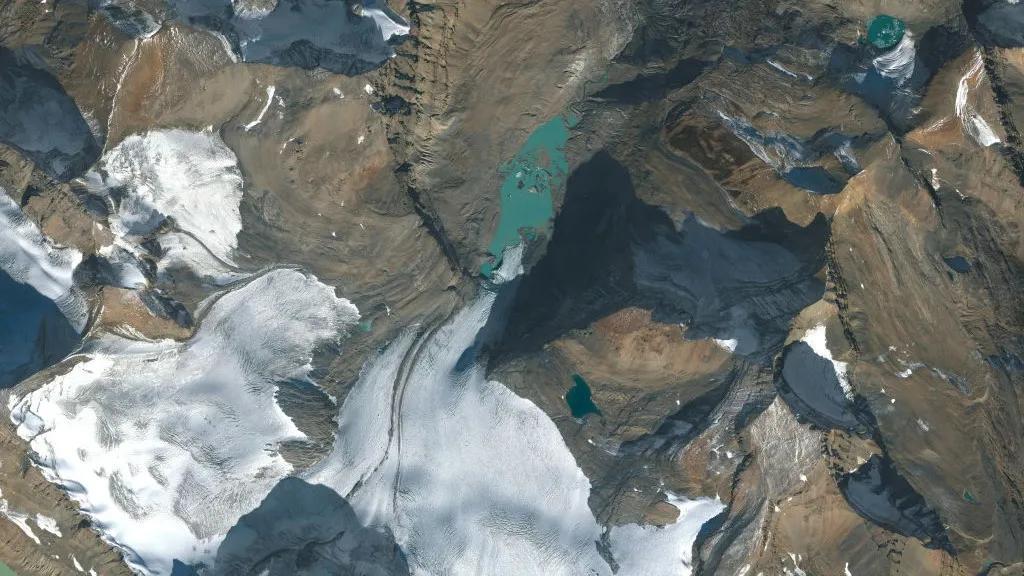
North America & Europe’s Glaciers Lost Unprecedented Ice in 4 Years: Study
In a shocking revelation, a recent study has found that glaciers in North America and Europe have lost an unprecedented amount of ice between 2021 and 2024. The research, published in the journal Geochemistry, Geophysics, Geosystems, reveals that glaciers in Washington, Montana, British Columbia, Alberta, and the Swiss Alps have shrunk at an alarming rate, with some experiencing losses of up to 13%.
According to the study, US and Canadian glaciers lost an average of 24.5 billion tons of ice per year between 2021 and 2024. This is more than twice the amount recorded between 2010 and 2020. In contrast, Swiss Alps glaciers lost 1.7 billion tons of ice annually during the same period.
The study’s findings are a stark reminder of the devastating impact of climate change on our planet’s ice caps. Glaciers play a crucial role in regulating the Earth’s climate, and their rapid melting has serious consequences for global sea levels, ecosystems, and biodiversity.
To conduct the study, researchers from the University of Colorado Boulder analyzed satellite data and ground-based observations to track the changes in glacier mass and extent between 2021 and 2024. The team used a combination of techniques, including radar and lidar imaging, to measure the volume of ice lost from the glaciers.
The results are striking: the study found that glaciers in the US and Canada lost a total of 98 billion tons of ice between 2021 and 2024, while Swiss Alps glaciers lost 6.8 billion tons. These losses are not only unprecedented but also exceed the average annual losses recorded between 2010 and 2020.
The study’s lead author, Dr. Austin Humphreys, emphasized the significance of the findings, saying, “The rate of glacier loss has accelerated over the past decade, and our study shows that this trend is continuing. The implications are alarming, as glaciers are a critical component of the Earth’s climate system.”
So, what are the causes of this rapid glacier melting? The study’s authors point to rising temperatures as the primary driver, with increased greenhouse gas emissions and atmospheric circulation patterns also playing a role. Additionally, changes in precipitation patterns and increased glacier calving (the breaking off of icebergs) have contributed to the rapid ice loss.
The consequences of this glacier melting are far-reaching and profound. As glaciers shrink, they release more freshwater into the oceans, which can exacerbate sea-level rise and alter coastal ecosystems. Moreover, the loss of glaciers can have devastating impacts on local communities, including changes to water supplies, increased risk of flooding, and loss of traditional ways of life.
The study’s findings serve as a wake-up call for policymakers, scientists, and the general public to take immediate action to address climate change. As Dr. Humphreys noted, “The window for action is still open, but it’s closing rapidly. We need to reduce our greenhouse gas emissions and transition to a low-carbon economy to mitigate the worst impacts of climate change.”
In conclusion, the study’s findings are a stark reminder of the urgent need to address climate change and its devastating impacts on our planet’s glaciers. As we move forward, it is essential that we prioritize research, policy, and collective action to mitigate the effects of climate change and protect our planet’s precious ice caps.
Source:
Humphreys, A. K., et al. (2025), Glacier mass changes in the western United States and Canadian Rockies and the European Alps between 2021 and 2024, Geochemistry, Geophysics, Geosystems, 26, e2025GL115235, doi: 10.1029/2025GL115235.
https://agupubs.onlinelibrary.wiley.com/doi/10.1029/2025GL115235






